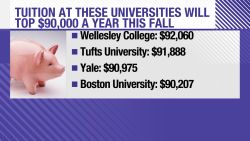Two of the former owners of Toys “R” Us have agreed to pay $20 million to help laid-off employees.
Bain Capital and KKR, private equity firms that owned part of the toy retailer, set up a severance fund to pay former workers who lost their jobs when the company closed its stores.
The third owner, real estate firm Vornado, did not join the fund, and did not immediately respond to request for comment.
Toys “R” Us filed for bankruptcy a year ago with plans to stay in business. But in March the company’s creditors forced it to go out out of business, and the 31,000 remaining employees didnot get severance payments.
Some top executives at Toys “R” Us received bonuses as part of the bankruptcy process. The nation’s bankruptcy laws place limits on the severance payments that can be made to laid-off employees, and they give priority to repaying creditors of the bankrupt companies.
Had the employees been laid off before the bankruptcy, they would have been entitled to severance pay of up to one week of pay for every year of service.
The $20 million severance fund does not come from Toys “R” Us.
The fund was set up following negotiations between the private equityfirms and various public interest groups that organized the employees, including Organization United for Respect, Private Equity Stakeholder Project and Center for Popular Democracy.
“This Fund begins to ensure the hard-working people who spent their lives building Toys ‘R’ Us and making children happy are not left out in the cold,” said Marilyn Muniz, a New York-based Toys “R” employee for nearly 20 years.
The groups are seeking additional contributions to the fund from Vornado as well as two Toys “R” Us lenders, Solus and Angelo Gordon, which they blame for pushing the company to shutdown operations rather than stay in business. Angelo Gordon declined to comment.
Solus issued a statement saying KKR and Bain are responsible for, “saddling the company with crushing debt.” It said that the lenders had provided money that had been used to pay workers’ salaries, including earlier severance payments, which it said “vastly exceed” the severance fund set up by Bain and KKR.
Solus said it is a part of a group of lenders looking into ways to possibly revive the company.
Tracy Forbes, a former employee who lost her job, told CNN Business that she had worked for the company for 31 years, making her way up to store manager of a Babies “R” Us store in Tempe, Arizona. At the time of the bankruptcy filing she figured she would get about seven months of severance if her store shut down. She said she was shocked when she learned the promised severance wouldn’t be paid.
“It was very difficult,” she said. “Here in Arizona, unemployment is only $240 a week. It’s not even minimum wage. It was rough. I only got by with friends and family helping me out.”
After about four months she found a job as an assistant manager of a Home Goods store, which pays less thanBabies “R” Us.She said she’s kept in touch with the employees who used to work with her at Babies “R” Us.
“Just about everyone has found some kind of work, but it generally took three or four months,” she said. “Some aren’t earning as much. Some of the lower-level employees have actually found better paying jobs.”
The fund has hired attorney Kenneth Feinberg to come up with a formula to determine who gets how much money. Feinberg has made a career deciding distribution to victims of events, such as the terrorist attacks on September 11, 2001, and the BP Deepwater Horizon oil spill. He has proposed that payments go to workers who had been with the company at least a year and who made between $5,000 and $110,000 in annual income.
“In order to maximize the impact of available funds, key eligibility requirements and payment parameters had to be instituted,” said Feinberg. Payments are expected to start soon after December 15 and be completed by April.
The $20 million fund will not cover a full severance plan for the workers. The employee groups estimate that would take $75 million.
The proposed payment schedule provides at least $200 to anyone eligible for payments and as much as $12,800 to the top earning employees – those earning more than $100,000 a year who had been with the company for more than 25 years. Those earning more than $110,000 are not eligible to receive payments from the fund.
A more typical employee, one who was earning $50,000 a year with 10 years of service, would get $2,400 under the plan, or about two-and-half weeks of pay.
Former employees can go to www.trufinancialassistancefund.com to find out about how much they might get and to comment on the distribution formula. Depending on the comments, the formula might be adjusted before the payments start.

























